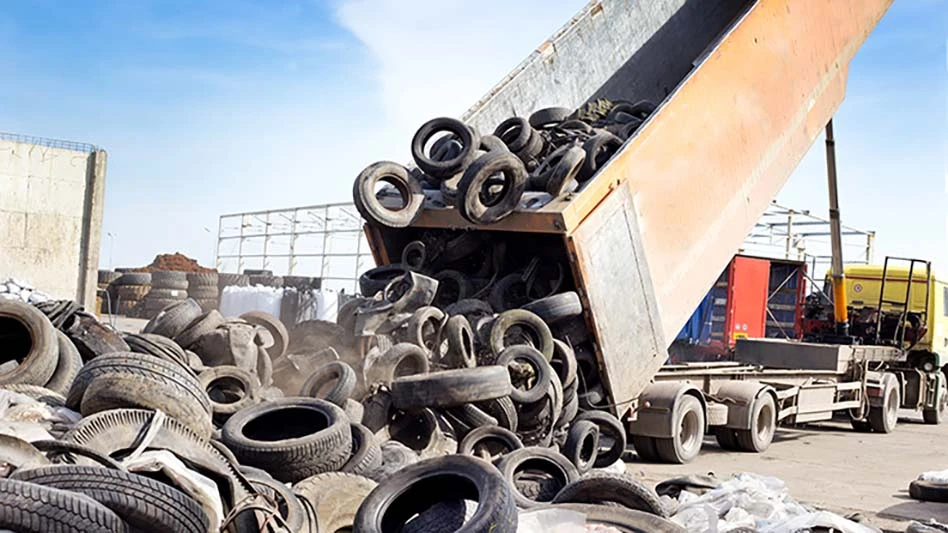
The on-again-off-again nature of the Trump administration’s tariffs has injected considerable uncertainty into the automotive market at a time when the industry was beginning to return to normal following the pandemic and amid constrained supply.
Tariff whiplash
The White House announced Jan. 31 that the U.S. would begin imposing 25 percent tariffs on goods, including automobiles, imported from Canada and Mexico and a 10 percent tariff on imports from China starting Feb. 1. While the tariff on Chinese goods went into effect as planned, the tariffs on goods from Mexico and Canada were delayed until March 4.
The tariff on Chinese goods increased to 20 percent March 4, and President Donald Trump announced the next day that tariffs on auto imports from Canada and Mexico would be delayed until April 2, provided automakers complied with standards in the USMCA, or the U.S.-Mexico-Canada Agreement, which the countries signed during Trump’s first term in office. According to the USMCA, goods can move among the three countries tariff-free if they are made entirely in North America or are transformed substantially in North America if made with components from other countries. For autos, 75 percent of the content must be from North America.
Trump followed that announcement by saying other goods from Canada and Mexico that complied with the USMCA, including scrap metal, would be exempted from the tariffs until April 2.
Additionally, the Trump administration removed exemptions previously granted under the Section 232 tariffs on aluminum and steel entering the U.S., effective March 12, with Trump saying he would raise the tariff on imports from Canada to 50 percent before dialing it back down to 25 percent after Ontario temporarily suspended its plan to charge a 25 percent tariff on electricity that it sends to states in the northern U.S.
In response to the Section 232 tariffs, Canada announced retaliatory tariffs on nearly $21 billion in U.S.-manufactured goods that went into effect March 13, while the European Union retaliated with new duties on U.S. industrial and farm products, which included steel and aluminum, beginning in April.
According to estimates calculated by Anderson Economic Group (AEG), which has offices in East Lansing, Michigan, and Chicago, the tariffs on Canada and Mexico could increase the cost of cars made in North America by $4,000 to $10,000 and potentially as much as $12,200 for some models with Chinese components.
Those numbers also don’t take the Section 232 tariffs of 25 percent on steel and aluminum imports into the U.S. into account, according to Aidan Bergsman of AEG. The cumulative effect of the tariffs could lower consumer demand for automobiles and lead to manufacturers offering fewer options, he tells Recycling Today.
Once retaliatory tariffs are applied, they could further disrupt the global auto market and manufacturing more broadly.
“For economists like myself, the unthinkable is coming true, with tariffs being applied to our free trade partners across North America,” says Jonathan Smoke, chief economist at Cox Automotive, based in Atlanta. “We have no history to study for this, but there will be implications. It is not even clear if the U.S. government has a way to efficiently track the movement of goods and impose duties, but set that aside: Production will be disrupted, supply will be restricted and prices will go up.
“This is happening at a moment when supply is tight already, and just as tax refund season approaches critical mass in dollars being distributed to consumers. Consumers with potential buying plans are very likely to act swiftly, so the short term is likely positive for sale volume. But once prices shift higher, demand will decline. Depending on how long this tariff stance lasts, it will also jeopardize the trajectory of the overall economy, further weakening growth potential later in the year,” Smoke adds.
“New tariffs hitting the U.S. borders are certainly troubling for the North American automotive market as we know it will add substantial input costs to automakers, which inevitably have to be passed along in some capacity to the consumer,” Cox Executive Analyst Erin Keating adds. “Now comes the ultimate test: The industry’s ability to contain the tariff-driven price increases, with the uncertainty of how long these tariffs stay intact and to what degree they are able to be assessed at the border, given the complexity. Ultimately, it is the volatility in policy that is most damaging to the automakers’ ability to strategize for the future; the uncertainty is far worse than knowing what hand they’ve been dealt.”
Charlie Chesbrough, Cox Automotive senior economist, says, “Through much of 2024, many of the key metrics for the auto industry were returning to long-established norms. New vehicle inventory had mostly recovered from the pandemic shortages; sales volumes and incentives were both increasing, as expected. While new vehicle prices are elevated compared to 2019, new vehicle price inflation was relatively tame in 2024, with transaction prices in January 2025 below levels measured in January 2023.
“Just as the industry seemed to be finding stable ground, new obstacles are thrown in place. How long higher tariffs are held in place is the industry’s big question right now. Higher prices and border disruptions could result in lower volume. Our forecast of 16.3 million new vehicle sales in 2025, at least at this moment, is now in question.”
Speaking during the S&P Global Aluminum Symposium in late January in Fort Lauderdale, Florida, James Martin, the Detroit-based director of consulting services at S&P Global Mobility, expressed his doubts that Trump would go through with the threatened tariffs on Canada and Mexico as planned, and his prediction proved accurate, at least initially.
However, if instituted as planned April 2, Martin predicted the tariffs would trigger adverse effects for the U.S. auto industry and the overall U.S. economy.

Vehicle production and the EV transition
According to S&P Global Mobility, the tariffs on imports from Canada and Mexico, once enacted, have the potential for an immediate North American production impact of 20,000 units per day.
Without that impact factored in, Martin said North American production has been steady at roughly 15 million vehicles per year, with S&P Global Mobility forecasting that 15.3 million vehicles would be produced in North America in 2025.
“There is a lot of demand in the system,” he said, noting that inventories have bounced back from supply chain disruptions related to the pandemic. However, much of the supply consists of “heavily contented, highest-price vehicles.”
That approach pushed the average price of a new vehicle in the U.S. to $48,000 in 2023. It has since declined to $46,000 through vehicle decontenting.
However, vehicle affordability remains a headwind as the decline in interest rates has not been as swift as the industry would like, Martin indicated in his presentation. The impact of potential tariffs doesn’t help the affordability issue, either.
“The life of a new production vehicle in the U.S. goes something like this: Engine parts produced in Canada are shipped to an engine plant in Michigan to be produced into an engine that goes into multiple vehicle assembly plants, including plants in Canada and plants in Mexico, and then those trucks built in Canada or Mexico come back to the United States,” he said. “How much of that is tariffed? Are the components tariffed? Are the engines tariffed? The vehicles are definitely tariffed. But you start to overlay tariff on top of tariff, and you’re back to that $48,000 a vehicle, [which] doesn’t seem too bad anymore.”
While the growth rate for electric vehicle (EV) adoption has slowed, according to Martin, year-over-year record sales remained in 2024. While from 2022 to 2023 the number of EVs sold increased by 46 percent, that increase fell to a single-digit figure in 2023 to 2024.
With the global geopolitical environment, Martin said more pushback on EVs was likely, leading to slower growth again, but still some growth. He added that it’s likely more battery EV programs will be delayed but not canceled going forward.
He also said an overcapacity situation is likely as manufacturers try to satisfy all types of customers, from those who still want internal combustion engine (ICE) vehicles to those who want hybrids or battery EVs.
“The thing is, while you’re ramping up volume in the battery electric and even the multienergy platforms, your money makers—your ICE vehicles—you hope they don’t go down too fast, so you wind up in an intentional overcapacity situation,” he said, noting automakers are building inventory or putting incentives on products to avoid doing so.

Auto sales
Martin said while the pace of auto sales in the U.S. has remained steady in the $16 billion range, it lacks momentum given the unstable environment.
“It seems to be pretty static for now, but our concern is that some of the geopolitical issues that are in front of us could bend that line even further down,” he said of the potential year-over-year change in vehicle sales.
The Trump administration’s softening of CAFE, or Corporate Average Fuel Economy, standards that mandate fuel efficiency for vehicles sold in the U.S. and auto emissions standards could mean some of the more mature and possibly lower-priced ICE vehicles will remain in the market longer than automakers originally thought, which Martin said would have the potential to increase total industry production volume.
“[However,] in most cases, … the automotive companies started engineering content two, three or four years ago,” to meet existing CAFE standards, he said. “They’ve tooled up suppliers to build the content to meet the standards that are in place today. So as those standards are either stalled or pulled back, they’ve got a tough decision to make: Do I continue to put the content in the vehicle, or do I reduce the content and save a little bit of cost on the vehicle?”
If the Trump administration removes the tax credits available for EV purchases under the Inflation Reduction Act, Martin doesn’t believe the bottom will fall out of that market, citing the increase in sales last year of EVs that didn’t qualify for the tax credit.
“I’ve taken a look at which electric vehicles are being sold compared to the vehicles that qualify for the IRA, and there are … more vehicles being sold that don’t qualify for the IRA than do now. There’s another caveat. There’s a leasing loophole,” he said, which extends the credit to leasing companies for all EVs. “[T]he lease company gets the credit and gets to decide whether or not to pass that credit on to the customer, and most do. … Lease rates on vehicles that don’t qualify for IRA increased by about 10 percentage points, … but people were still buying those vehicles instead of leasing them. … What I’m suggesting here is that there’s already a solid core of shoppers who are willing to buy an electric vehicle without incentives because they’re doing it already.”
Regarding the pending tariffs on Canadian and Mexican automobiles and components, Martin said, the earnings before interest, taxes, depreciation and amortization for GM and Stellantis potentially could take a hit in excess of 20 percent. Ford would realize less of an impact because it has started moving much of its vehicle assembly processes back to the United States from Mexico.
“The issue with GM and Stellantis is, again, they’ve got a lot of component plants—remember my scenario of parts coming in, then going back out, then coming back as a car or a truck,” he said. “General Motors and Stellantis live by that model, plus the most profitable vehicles in both of those companies are their large, full-size trucks. One of GM’s biggest truck plants is in Oshawa, Ontario. One of their biggest is in Toluca, Mexico, so their profit gets hit hard if there’s tariffs on those products coming from those plants into the U.S.”
The potential tariffs on automobiles and automotive components from Canada and Mexico could have negative results for U.S. automakers and consumers alike.
As of press time, whether Trump extends the auto exception past April 2 or otherwise modifies the tariffs on Canada and Mexico or the Section 232 tariffs on aluminum and steel remains to be seen. In the meantime, the uncertainty lingers, potentially negatively affecting U.S. economic growth and raising the price of automobiles.

Explore the April 2025 Issue
Check out more from this issue and find your next story to read.
Latest from Recycling Today
- Lautenbach Recycling names business development manager
- Sebright Products partners with German waste management equipment company
- WasteExpo transitions to biennial format for enhanced experiences
- Study highlights progress, challenges in meeting PCR goals for packaging
- Washington legislature passes EPR bill
- PureCycle makes progress on use of PureFive resin in film trials
- New copper alloy achieves unprecedented high-temperature performance
- Gränges boosts profits and sales volume in Q1 2025





